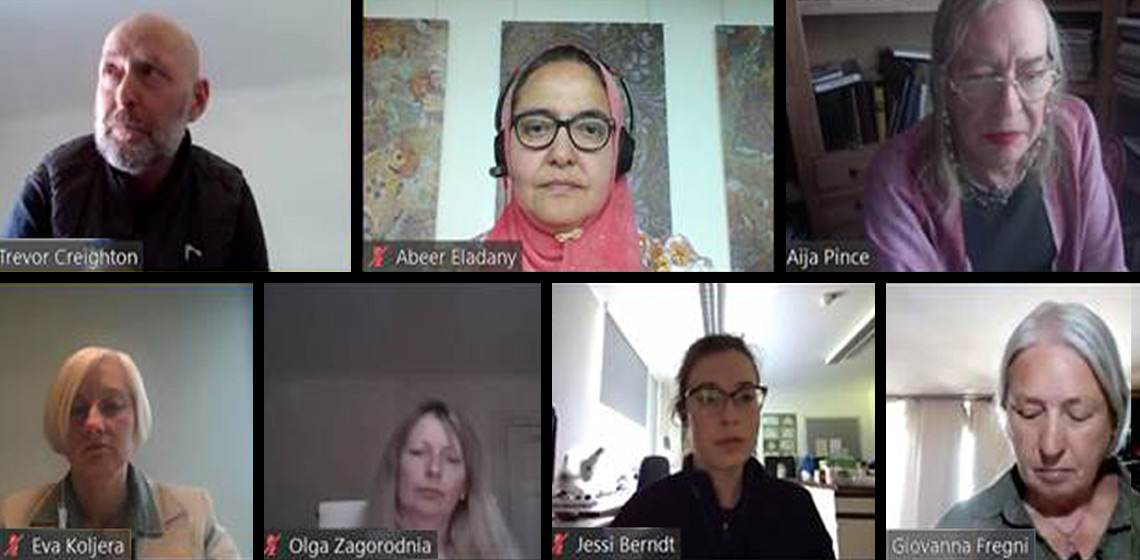The content is published under a Creative Commons Attribution Non-Commercial 4.0 License.
Unreviewed Mixed Matters Article:
Celebrating International Museum Day 2023... Internationally

In order to celebrate International Museum Day 2023, I strived to make a change in a personal format to mark the occasion as being as international as possible. Back in the day, when I was working at Dar al-Athar al-Islamiyyah, we marked the day as near as possible. Given that May was going to be too hot for comfort, we usually celebrated a month earlier. I was happy with that, but even then, despite the splendours of the al-Sabah collection that have travelled to so many museums (the Louvre, The Met, the British Museum, the Prado and many others), IMD seemed to end up a very local affair, because while we put on a great show, with a great childrens’ programme as well as other artistic and ecological functions, nobody came to us from around the world.
Thanks to the Historians of Islamic Arts’ symposium during covid, the new phenomenon of Zoom made an international discussion take place, and hence my embryonic concept for IMD. This year in May, I hope I may have refined the concept further by realising the format is still evolving, but managed to engage Āraiši Ezerpils in Latvia, introduced by their director Eva Koljera, and Butser Ancient Farm in the UK, introduced by Trevor Creighton, their project archaeologist. They engaged in dialogue with a distinguished panel after their presentations, comprising of Dr Abeer Eladany a curatorial assistant at the University of Aberdeen’s Museums and Special Collections, a member of the Slavery, Empire and Scottish Museums steering group, and a board member of ICOM-UK; Dr Olga Zagorodnia who gained a PhD degree at the Institute of Archaeology, National Academy of Sciences of Ukraine in 2014 and is currently working at the British Museum; Dr Giovanna Fregni, an independent researcher with a specialisation in non-ferrous metals and practical background in jewellery making and metalsmithing, and Jessi Berndt, a PhD candidate at the University of Tübingen, in the Institute of Archaeological Sciences, currently studying the identification of processes of archaeobotanical materials, focusing on food and drink.
His Excellency, Paul Brummell, British Ambassador to Latvia, graced the proceedings with an introduction.
The conclusion was that international dialogue was of enormous benefit to how much we can learn from each other, and it was an education in itself to moderate such a distinguished panel of experts. I remember with delight a side discussion with Trevor about the ‘so called’, Dark ages and how dark; maybe they were not. But in a way it was part of my plan to guide the discussion with as light a touch as possible, letting the conversation take over in whichever direction it went.
One very great message that emerged from the presentations was the great support that both institutions showed for the disabled in the UK and in Latvia, the valuable therapy that archaeology provides, and that institutions are increasingly aware of accessibility, sustainability and the key role they play in the community. This was apart from the science and detective work in various research projects and how they applied to different institutions.
Āraši and Butser are very different projects, in that Āraiši’s goals are those of reconstruction and preservation of a specific site; a nationally important lake-dwelling site with original and reconstructed remnants of Latvian prehistory with remains of the 9th–10th centuries’ Latgalian fortified, late Iron Age settlement near Cēsis, Latvia. Their story goes back to 1960s to -70s, when one of the largest archaeological excavations in Latvia took place under supervision of the archaeologist Jānis Apals. Butser Ancient Farm, on the other hand, features experimental reconstructions of prehistoric, Romano-British and Anglo-Saxon buildings located near Petersfield in Hampshire, southern England. Not being a national monument like Āraiši, Butser has the advantage of constant evolution, experimentation, evaluation and the ability to change. The dialogue proved valuable however, as, working with similar materials, Āraiši has to find ways of maintaining its structures, unique in time and place. On the other hand, both have similar goals of bringing life to history, and educating the public through ‘edutainment’ on high days and holidays.

